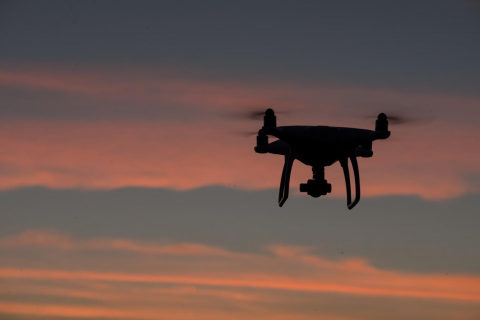
The Ministry of Climate Change and Environment (MOCCAE) has completed the pilot phase of a research project to map agricultural areas across the UAE using drones.
Aimed at facilitating the planning of future agricultural support services, the scheme will provide a wealth of raw data for analysis, such as the number and size of crop, livestock, and mixed farms as well as cooled and regular greenhouses, soil type and condition, crop diseases, and irrigation methods.
Furthermore, the initiative will help monitor agricultural productivity, including seasonal crops (vegetables and field crops) and year-round crops (fruits) in its ambit, to devise adequate marketing plans for farmers. In addition, areas cultivating feed crops will also be assessed as part of the mapping exercise to help MOCCAE identify the types of feed that need to be imported.
Speaking on the project, His Excellency Dr Thani bin Ahmed Al Zeyoudi, Minister of Climate Change and Environment, said: “Through leveraging drones for spatial data collection on farms, we seek to establish an accurate database of actionable statistical information to inform decision making and planning. The scheme will assist us in optimizing the allocation of agricultural resources.”
His Excellency Dr Al Zeyoudi noted that the initiative, once completed, will place the UAE among the top five countries in the world in terms of area surveyed using unmanned aerial vehicles, and the first to employ this technology to map as many as 22 categories of statistical data.
Running between August and December 2018, the pilot phase involved remote sensing and aerial imagery of Wadi Al-aim in Ras Al Khaimah. The data collected using drones indicated the presence of 16 crop farms, three animal farms, and three mixed farms, in addition to two greenhouses, 57 wells, and windbreakers spanning a length of 248 meters. The survey also found that year-round crops are grown across 80 square kilometers and seasonal crops across 19.2 square kilometers, while the total area dedicated to protected agriculture spans 355 square meters. Soil types in the location vary between silt, sand, and clay.
Categories
- Log in to post comments